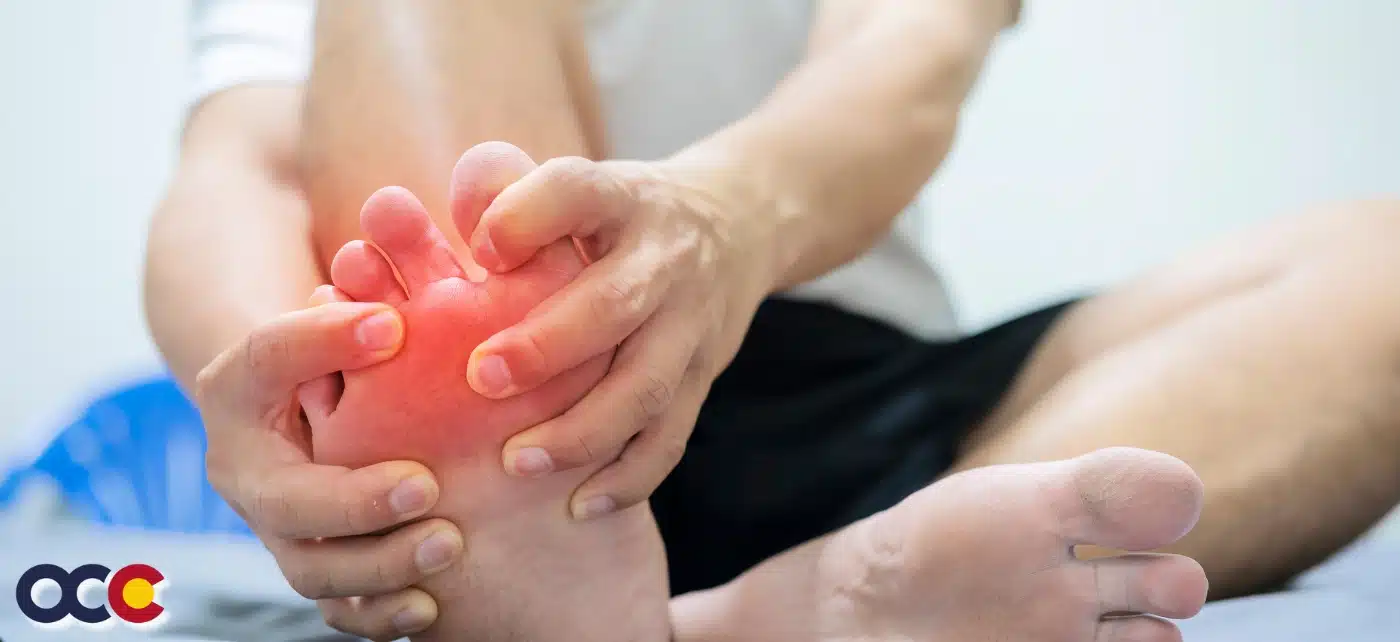Spring is here; a time when Coloradans are hitting the trails and the courts and trading in winter boots for spring heels. But when winter flurries turn into a flurry of activity, we open ourselves to the possibility of injury. One of the most common injuries each spring is ankle injury. Lateral movements, walking on uneven surfaces, or slips and falls can cause instability that leads to ankle ligament sprains. The severity of the sprain varies from mild to moderate to severe, so diagnosis is essential.
Ankle Sprain Grades:
- Grade 1 – is stretching or slight tearing of the ligament with mild tenderness, swelling, and stiffness. The ankle feels stable, and it is usually possible to walk with minimal pain.
- Grade 2 – is a larger but incomplete tear with moderate pain, swelling, and bruising. Although the ankle sometimes feels stable, the damaged areas are tender to the touch, and walking is painful.
- Grade 3 – is a complete tear of the affected ligament or ligaments with severe swelling and bruising. The ankle is unstable and may feel “wobbly.” Walking is usually not possible because the ankle gives out and there is intense pain, although initial pain may quickly subside.
RICE vs. ADVICE. When to see a doctor for an ankle sprain.
Many ankle injuries can heal with RICE (rest, ice, compression, elevation). This core treatment applies to most grade 1 sprains. The compression treatment varies with sprain severity and ranges from wrapping to splints and air casts to crutches.
When to seek help. If you have severe pain, numbness, skin discoloration, loss of mobility, you need to see a doctor. Time is also a marker. If pain persists past a week or discoloration doesn’t subside after two weeks, you should seek advice.
Ankle sprains can heal in six weeks or take multiple months. Correct healing is a priority as repeated injury can lead to joint weakness and instability. Home therapy or physical therapy are key tools to restore range of motion, stretching ability and the necessary balance to restore maximum stability.
Ankle Injury Prevention
Of course the best way to keep a spring in your step is to avoid injury. As the snow melts away, here are three tips for ankle injury prevention:
- Maintain Proper Equipment. The condition of your shoes is as important as the fit. Shoes with uneven wear (e.g. sloped wear or worn out sole) place the foot in a vulnerable position rather than maintaining a secure foundation. You need stability for good mobility.
- Maintain Proper Conditioning. Consistent exercise keeps your muscles in optimal shape to perform and protect your joints. Optimal fitness levels fuel your performance and recovery.
- Warm-up and Cool Down. Your muscles perform best when you are properly warmed up and stretched out. Muscle support, stability and balance are maximized when you take care of your muscles – including pre and post stretching.
Spring into the warm weather by putting your body in the position to succeed rather than stumble. At Advanced Orthopedics, we want you to Be Active. Make sure you’re grading your game, not your sprain this spring!









